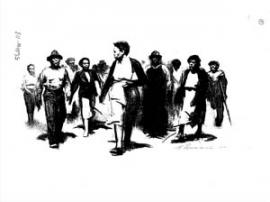Montgomery Bus Boycott
Introduction
The Montgomery bus boycott serves as an ideal historical model for teaching social movements, not only because the boycott achieved an end to segregated seating on city bus lines, but it also illustrates some of the key elements of achieving social transformation: sustained commitment, intense strategizing, and intricate cooperation. Typically, educators focus on Rosa Parks’ arrest and the speeches by Martin Luther King, Jr. While Parks and King certainly played an integral role in the boycott, there are many more stories to tell and lessons to learn through the experiences of Montgomery’s citizens in 1955 and 1956. As Martin Luther King, Jr., stated during the first few days of the boycott, by standing up for their rights, the people of Montgomery “injected a new meaning into the veins of history and civilization.”
Just as the bus boycott relied on the participation of many individuals, so does this unit. Each lesson is constructed to engage students as active participants. The teacher plays the role of a facilitator, not as a lecturer, and in turn the students construct their own understanding of the past. To complete the entire unit of five lessons and four culminating assignments would take approximately three weeks. Therefore, we recommend that you adjust each lesson to fit the needs of your students and your curriculum framework. Each lesson can stand alone or can be taught in combination with others.
Essential Question
- 1
How can everyday people organize to transform a community?
Sub Questions
- 1
Does the general public regard Rosa Parks as a historical figure or more of a legend?
- 2
Who is Claudette Colvin and why is she left out of the mainstream historical narrative?
- 3
Did the citizens of Montgomery achieve justice, social transformation, and/or reconciliation as a result of their nonviolent direct action?
- 4
Some have described the Montgomery bus boycott as the beginning of the civil rights movement. Is that an accurate description? How should the boycott be situated in the broader African American freedom struggle? How should it be told?


